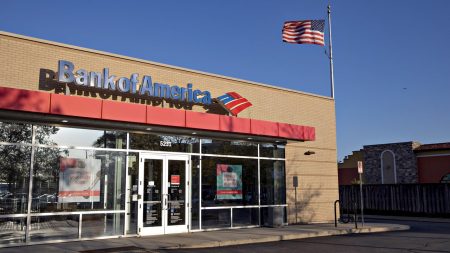Christina Zelow Lundquist/ Getty Images; Illustration by Austin Courregé/Bankrate
Key takeaways
- A cash-out refinance replaces your current mortgage with a new, bigger one that converts some of your home’s equity to cash.
- The terms of your refinanced mortgage might significantly differ from your original loan, including a new rate and a longer or shorter duration.
- You can do a cash-out refi for any reason, but many borrowers use it to pay for large-scale home improvements.
Paying down your mortgage helps build equity in your home, but you don’t have to wait until you completely repay your loan — or sell the property outright — to access that equity. Instead, you can convert the equity you have into ready money, and still continue paying off your mortgage, with a cash-out refinance.
What is a cash-out refinance?
A cash-out refinance is the process of replacing your current mortgage with a new, larger mortgage for the remaining balance of the original loan plus cash from your home’s equity.
You’ll receive the cash in a lump-sum payment. You can use this money for any purpose, including home remodeling, debt consolidation, college tuition and other financial needs.
How does a cash-out refinance work?
A cash-out refi is similar to a regular (or rate-and-term) refi: You’ll replace your existing mortgage with a new one at a new interest rate, and sometimes a new term length. The difference is that your new loan will be for a larger amount, rather than just the remaining balance of your original loan. That larger amount includes cash withdrawn from your home’s equity.
Cash-out refinancing is beneficial if you can reduce the interest rate on your primary mortgage and make good use of the funds you take out.
— Greg McBride, CFA, Chief Financial Analyst for Bankrate
Cash-out refi example
Let’s say you still owe $100,000 on your home, and it’s currently worth $400,000. That means you have $300,000 in equity. For a cash-out refinance, you’re typically required to maintain at least 20 percent equity in the home. So in this example, that means you’d need to keep $80,000 intact, leaving you with up to $220,000 to take out.
Cash-out refinance requirements
Just as you would with any mortgage, you’ll need to meet qualifying criteria to be eligible for a cash-out refinance. For a conventional loan, these requirements include:
- Credit score: You’ll generally need a credit score of at least 620 to qualify. A higher score will usually get you a more competitive interest rate.
- Debt-to-income (DTI) ratio: This measures your monthly debt payments — including the refinanced mortgage payment — against your gross monthly income. In many cases, lenders cap this at 43 percent.
- Equity: Most lenders require you to have at least 20 percent home equity in order to take cash out.
- Seasoning: Conventional cash-out refis typically come with a six-month seasoning requirement, meaning you must have owned the home for at least six months.
How to get a cash-out refinance
Here are the basic steps you’ll need to take to secure a cash-out refi:
- Determine how much you can withdraw: Figure out how much you can borrow before you get started. That means finding out your current home value and calculating what 80 percent of it comes to (ie, multiplying it by 0.80), as that’s likely to be the maximum a lender will let you borrow. Subtract your current mortgage balance from that number to figure out how much you could potentially cash out.
- Figure out your goals: What do you want a cash-out refinance to do for you? If the funds will truly move you toward your financial goals, it could make sense — as long as your new, larger mortgage payment isn’t a struggle. A financial advisor can help you determine if it’s right for you.
- Shop around for the best terms: Each lender will have its own criteria for determining if you qualify, and each will have its own set of closing costs and fees. Comparing rates and terms from a few different lenders can help you get the best deal available based on your specific finances.
- Secure the loan and close: Once you’ve decided which lender is right for you, go through their application and underwriting process. Be ready to provide proof of income, like financial statements and tax returns. Keep in mind that, as part of this process, your home will need to be professionally appraised to determine its value. After the closing, you’ll get the lump sum of cash from your new lender.
How much cash can you get with a cash-out refinance?
With a conventional cash-out refinance — the most common kind — you can typically borrow up to 80 percent of your home’s value. However, this threshold varies depending on the property type. For a multifamily home, for example, you often can only borrow up to 75 percent.
For an FHA cash-out refinance, you might be eligible to borrow up to 80 percent of the value of your home, as well. And with a VA loan cash-out, you could potentially qualify to tap all of your home’s equity.
Ways to use the money from a cash-out refinance
The money from a cash-out refinance can be used for almost any purpose. However, many borrowers use the proceeds for expenses such as:
- Home improvement projects: You could use a cash-out refinance to remodel your kitchen or put an addition on your house, for example.
- High-interest debt consolidation: Refinance rates tend to be lower compared to other forms of debt, like credit cards. You can use a cash-out refinance to pay off these debts and pay the loan back with one, lower-cost monthly payment instead.
- College tuition: Tapping home equity to pay for college can make sense if the refinance rate is lower than the rate for a student loan.
- Investments: Some people purchase an investment property using a cash-out refinance. Others use the funds for goals like starting a business.
This type of refinancing is one of the cheaper ways to pay for large expenses, in part because the collateral involved — your home — translates to lower risk for lenders. In a pinch, you’re far more likely to pay your mortgage than your credit card bill, for instance.
Pros and cons of cash-out refinancing
Pros
- Lowering your mortgage interest rate: The potential for a lower rate is the most common reason borrowers refinance.
- Lowering your cost to borrow: Cash-out refinances often have lower rates than home equity loans, personal loans and credit cards.
- Improving your credit: If you use your equity to consolidate debt, your credit utilization ratio (the amount of your outstanding balances compared to your overall credit limits) could drop. This can help boost your credit score.
- Taking advantage of tax deductions: If you use the cashed-out funds for home improvements and itemize your taxes, you could deduct the interest.
Cons
- Your interest rate might actually go up: If interest rates have risen substantially since your original mortgage, you’ll pay more on your new loan, even with good credit. Since the new mortgage is bigger, you’ll be charged more in interest, too.
- You could prolong repayments: If you’re using a cash-out refi to consolidate debt, make sure you’re not prolonging over decades repayments you could have paid off sooner and at a lower total cost otherwise. “Keep in mind that the repayment on whatever cash you take out is being spread over 30 years, so paying off higher-cost credit card debt with a cash-out refinance may not yield the savings you think,” says Greg McBride, chief financial analyst for Bankrate. “Using the cash out for home improvements is a more prudent use.”
- You increase the risk of losing your home: A cash-out refinance increases your mortgage balance. Failing to repay the loan means you could lose your home to foreclosure. Don’t take out more cash than you really need, and make sure you’re using it for a purpose that will improve your finances instead of worsening your situation.
Is a cash-out refinance a good idea for you?
Ultimately, it depends on your personal situation. You might benefit from a cash-out refi if:
- You can qualify for a lower rate: If mortgage rates have decreased since you first took out your loan, or your credit has improved — or both — you may be able to get a lower rate when you refinance. If so, a cash-out refinance might make more sense than other methods of tapping your home equity.
- You need the funds to improve your long-term financial outlook: A cash-out refinance can be a good idea if you need to access a large amount of money to build wealth, such as by adding value to your home or by funding education to further your career.
Alternatives to a cash-out refinance
If a cash-out refi doesn’t work for you, here are some alternatives to consider.
- HELOC: A home equity line of credit, or HELOC, allows you to borrow money when you need to with a revolving line of credit, similar to a credit card. HELOC interest rates are variable, fluctuating with the prime rate. To get a HELOC, you must meet certain requirements.
- Home equity loan: A home equity loan is a second mortgage that provides a lump-sum payment. Unlike a HELOC, home equity loans have a fixed rate and you start repaying them immediately. Bankrate’s home equity loan calculator can show you how much you might be able to borrow.
- Personal loan: A personal loan is a shorter-term loan that provides funds for virtually any purpose. Personal loan interest rates vary widely and can depend on your credit, but the money borrowed is typically repaid on a monthly basis, like a mortgage. Personal loans often require less paperwork than a refinance and can sometimes be approved and funded the same day you apply.
- Reverse mortgage: A reverse mortgage allows homeowners who meet equity and age requirements to withdraw cash from their homes. The balance doesn’t have to be repaid for as long as the borrower lives in and maintains the home and pays their property taxes and homeowners insurance.
FAQs
Read the full article here









